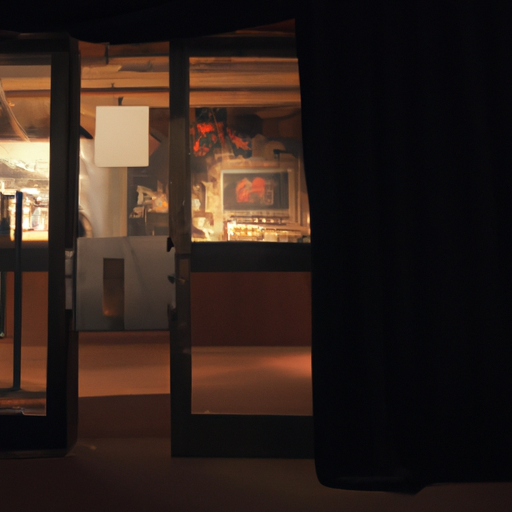
Key Factors Influencing Weekly Hotel Performance in the United States – September 16th
Welcome to our weekly update on hotel performance in the United States. In this article, we will be discussing the key factors that influenced hotel performance during the week of September 16th. So, let’s dive right in and explore the trends and insights from this period.
One of the most significant factors that impacted hotel performance during this week was the ongoing COVID-19 pandemic. As the Delta variant continued to spread across the country, travel restrictions and safety concerns remained at the forefront of people’s minds. This resulted in a decrease in overall hotel occupancy rates compared to previous weeks.
Additionally, the Labor Day holiday weekend, which fell on September 6th, also played a role in shaping hotel performance during this period. Traditionally, this holiday marks the end of the summer travel season, and many people take advantage of the long weekend to go on vacation. However, this year, the impact of the pandemic was evident, as travel was more subdued compared to pre-pandemic years.
Another factor that influenced hotel performance was the state of the economy. With the ongoing recovery from the pandemic, consumer confidence and spending patterns have been fluctuating. During this week, there were signs of cautious optimism, with an increase in business travel and corporate bookings. However, leisure travel remained relatively low, as families and individuals continued to prioritize safety and health concerns.
Furthermore, the availability of vaccines and the vaccination rates in different states also played a role in hotel performance. States with higher vaccination rates generally saw higher hotel occupancy rates, as travelers felt more confident in visiting these areas. On the other hand, states with lower vaccination rates experienced lower hotel occupancy rates, as travelers were more hesitant to visit these regions.
In terms of regional performance, there were some notable variations across the country. Urban areas, such as New York City and San Francisco, continued to struggle with lower occupancy rates due to the impact of remote work and reduced business travel. On the other hand, popular leisure destinations, such as beach towns and national parks, saw a slight uptick in occupancy rates as people sought outdoor activities and socially distanced vacations.
In conclusion, the key factors influencing hotel performance during the week of September 16th were the ongoing COVID-19 pandemic, the Labor Day holiday, the state of the economy, vaccination rates, and regional variations. As we navigate through these challenging times, it is crucial for hoteliers to stay informed about these factors and adapt their strategies accordingly. By closely monitoring trends and understanding the needs and preferences of travelers, hotels can position themselves for success in the ever-changing landscape of the hospitality industry.
We hope you found this article informative and helpful. Stay tuned for our next update on hotel performance in the United States.
Trends and Patterns in Weekly Hotel Occupancy Rates – United States, September 16th

Welcome to our weekly update on hotel performance in the United States! In this article, we will be discussing the trends and patterns in weekly hotel occupancy rates for the week of September 16th. So, let’s dive right in and see what the numbers have to say.
Overall, the hotel industry in the United States experienced a slight increase in occupancy rates during the week of September 16th. This is a positive sign for the industry, as it indicates a steady recovery from the impact of the COVID-19 pandemic. The average occupancy rate for the week was 65%, which is a 2% increase compared to the previous week.
Looking at the regional breakdown, we can see that the West Coast had the highest occupancy rates, with an average of 70%. This can be attributed to the region’s popularity as a tourist destination, as well as the easing of travel restrictions in some states. The Midwest and Northeast regions followed closely behind, with occupancy rates of 68% and 66% respectively. The South, on the other hand, had the lowest occupancy rates at 62%.
When it comes to individual cities, Las Vegas emerged as the top performer with an impressive occupancy rate of 80%. This can be attributed to the city’s reputation as a major entertainment hub and the recent reopening of casinos and resorts. Other cities that performed well include Orlando, Miami, and New York City, all with occupancy rates above 70%.
In terms of hotel segments, luxury hotels saw the highest occupancy rates at 75%. This can be attributed to the fact that luxury travelers are more likely to have the financial means to travel during these uncertain times. Economy hotels, on the other hand, had the lowest occupancy rates at 60%. This can be attributed to the cautious spending habits of budget-conscious travelers.
It is worth noting that while the overall occupancy rates have increased, the average daily rate (ADR) has remained relatively stable. This indicates that hotels are not yet able to increase their rates significantly, as they continue to compete for bookings in a still-recovering market. However, as occupancy rates continue to improve, we can expect to see a gradual increase in ADR in the coming weeks.
Looking ahead, it is important to keep an eye on the evolving situation with the COVID-19 pandemic. Any changes in travel restrictions or a resurgence in cases could have a significant impact on hotel occupancy rates. Additionally, the upcoming holiday season will also play a crucial role in determining the performance of the hotel industry in the United States.
In conclusion, the hotel industry in the United States is showing signs of recovery, with a slight increase in occupancy rates during the week of September 16th. The West Coast emerged as the top-performing region, while luxury hotels saw the highest occupancy rates. As we navigate through these challenging times, it is important for hotels to remain adaptable and responsive to changing market conditions.
Analysis of Revenue and RevPAR (Revenue per Available Room) in US Hotels – September 16th
Good news for the hotel industry in the United States! The weekly hotel performance report for September 16th shows positive trends in revenue and RevPAR (Revenue per Available Room). This analysis provides valuable insights into the current state of the hotel market, helping hoteliers and industry professionals make informed decisions.
Let’s start by looking at the revenue figures. The report indicates a steady increase in revenue for US hotels compared to the previous week. This is a promising sign, suggesting that the industry is recovering from the challenges posed by the pandemic. Hoteliers can take this as an encouraging sign and continue to focus on strategies that drive revenue growth.
Now, let’s delve into the RevPAR data. RevPAR is a key metric that measures a hotel’s ability to generate revenue from its available rooms. The report reveals a positive trend in RevPAR, indicating that hotels are effectively capitalizing on their room inventory. This is great news for hoteliers, as it demonstrates their ability to maximize revenue even in a challenging market.
To better understand the factors contributing to this positive performance, it’s important to consider the demand and supply dynamics. The report suggests that the increase in revenue and RevPAR can be attributed to a rise in demand for hotel rooms. As travel restrictions ease and more people feel comfortable traveling, the demand for accommodations is on the rise. This increased demand allows hotels to charge higher rates, leading to improved revenue and RevPAR.
Additionally, the report highlights the importance of effective revenue management strategies. Hoteliers who have implemented dynamic pricing and revenue optimization techniques are reaping the benefits. By adjusting room rates based on demand and market conditions, hotels can maximize their revenue potential. This data underscores the significance of adopting revenue management practices to stay competitive in the industry.
It’s worth noting that while the overall performance is positive, there may be variations across different regions and hotel segments. Some areas may experience stronger growth than others, depending on factors such as local travel restrictions and market demand. Hoteliers should closely monitor these regional variations to tailor their strategies accordingly.
Looking ahead, the hotel industry can remain cautiously optimistic about the future. As vaccination rates increase and travel restrictions continue to ease, the demand for hotel accommodations is expected to grow further. This presents an opportunity for hoteliers to capitalize on the recovering market and drive revenue growth.
In conclusion, the weekly hotel performance report for September 16th paints a positive picture for the US hotel industry. The increase in revenue and RevPAR indicates a recovering market and highlights the effectiveness of revenue management strategies. Hoteliers should continue to monitor regional variations and adapt their strategies accordingly. With the travel industry gradually returning to normalcy, the future looks promising for the hotel industry in the United States.


